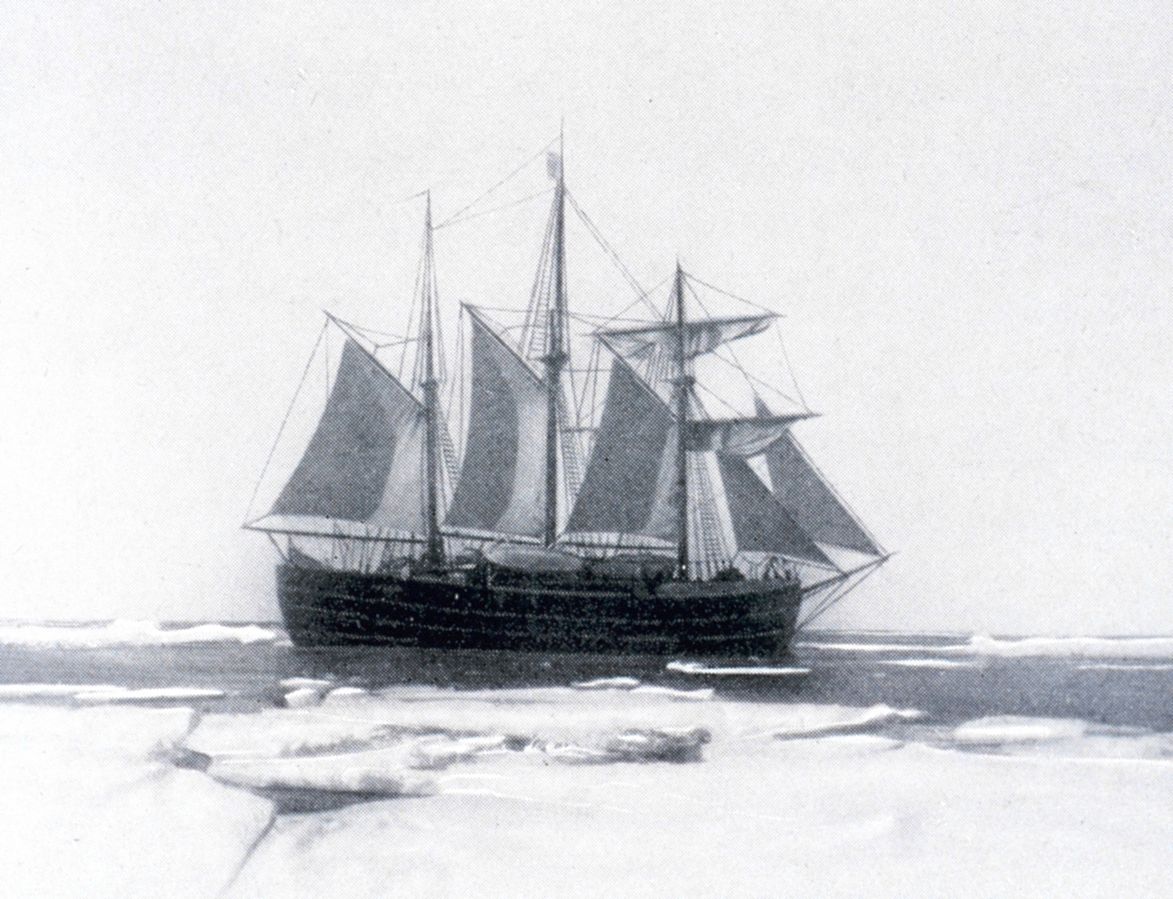Summary | Excerpt | Reviews | Beyond the Book | Read-Alikes | Genres & Themes | Author Bio

How the Ocean Works
by Helen CzerskiThis article relates to The Blue Machine
 Helen Czerski's book The Blue Machine explains how Earth's oceanic system functions, including some discussion of the work that went into discovering that information. A few expeditions that contributed greatly were those of the Norwegian ship the Fram, which explored the Arctic and Antarctic oceans in the late 19th and early 20th centuries.
Helen Czerski's book The Blue Machine explains how Earth's oceanic system functions, including some discussion of the work that went into discovering that information. A few expeditions that contributed greatly were those of the Norwegian ship the Fram, which explored the Arctic and Antarctic oceans in the late 19th and early 20th centuries.
In June of 1881, the USS Jeanette was trapped in ice north of Siberia. The crushing power of the ice damaged the ship badly enough that the crew were forced to abandon it, and it subsequently sank. Later, debris from the ship was found on the Greenland coast, 2,900 nautical miles from where it was lost. This led Norwegian scientist Henrik Mohn to theorize the existence of a current running from east to west across the Arctic Ocean.
Fridtjof Nansen, a Norwegian scientist, explorer and diplomat, thought that this current could be used to take a ship across the North Pole. The Arctic ice, however, made this a perilous idea. Nansen set out to build a ship that could endure the massive crushing pressure of the ice. His first step was to secure funding, which came in the form of a grant from the Norwegian government as well as donations from private citizens. Nansen recruited shipbuilder Colin Archer to design and construct it. Czerski describes the Fram as "a bowl masquerading as a ship, smooth, plump and curvaceous." The unusual shape of the hull allowed the ship to be lifted by the ice pressing inward on it, rather than simply crushed, "popping up like a seed squeezed between your thumb and forefinger." The outside was covered in ice sheathing made of greenheart, one of the stiffest woods in the world, prized in shipbuilding for its durability and resistance to pests. The sheathing was also designed to fail safely, so if the ice tore it away it would not damage the integrity of the hull.
The Fram's maiden voyage began on June 24th, 1893, with Otto Sverdrup serving as captain while Nansen managed the scientific work done on the trip. For three years, the ship and her crew followed the Arctic Ocean's current, taking extensive scientific measurements along the way. Eventually it became clear that the current would not take the ship across the North Pole, so on March 14th, 1895, Nansen and fellow explorer Hjalmar Johansen left the ship to attempt to cross the ice on dog sleds. Although this effort failed, the expedition vindicated Archer's ship design and greatly expanded understanding of the Arctic Ocean.
After some alterations to provide more space for the crew and improve stability, the Fram made another voyage north in 1898. Over the four-year trip, the crew mapped large areas of the coast of Greenland and northern Canada, as well as taking extensive scientific measurements and samples of plants, animals, plankton and rocks.
The Fram's third voyage was led by Roald Amundsen, who set out in 1910 with the goal of reaching the South Pole. On December 14th, 1911, he and his crew became the first expedition to do so, beating out Robert Falcon Scott's group by about a month.
World War I put a stop to any thoughts of further journeys for the Fram. The long travel to the Antarctic and back had left the ship in poor condition, and this worsened over years of inactivity. However, many Norwegians recognized its historical importance, and efforts began to preserve her. In 1929, the Fram was moved to Framnæs Shipyard in Sandefjord for restoration. Afterward, the ship visited many towns along the coast for temporary exhibition, before being taken to her final home in Oslo. Today, visitors to the Fram Museum can climb aboard the Fram, and also see the Gjøa—the first ship to sail the entire Northwest Passage, along with other fascinating exhibits.
Drawing of the Fram, courtesy of Amundsen, Roald: The South Pole, Vol. I, first published by John Murray, London 1912
Filed under Medicine, Science and Tech
![]() This "beyond the book article" relates to The Blue Machine. It originally ran in October 2023 and has been updated for the
September 2024 paperback edition.
Go to magazine.
This "beyond the book article" relates to The Blue Machine. It originally ran in October 2023 and has been updated for the
September 2024 paperback edition.
Go to magazine.
Your guide toexceptional books
BookBrowse seeks out and recommends the best in contemporary fiction and nonfiction—books that not only engage and entertain but also deepen our understanding of ourselves and the world around us.